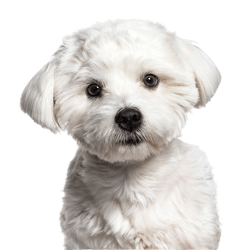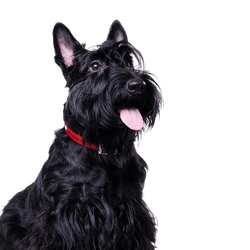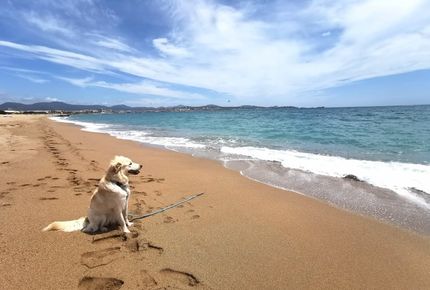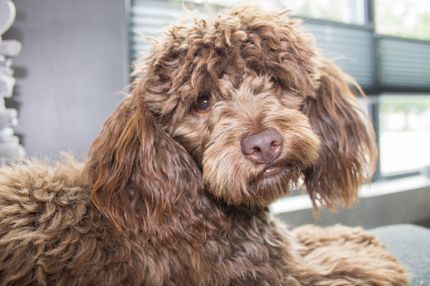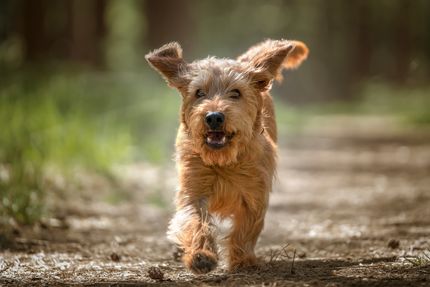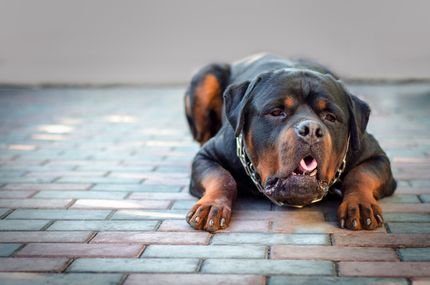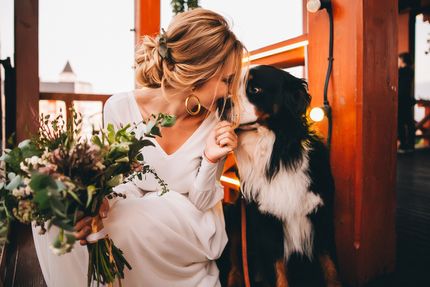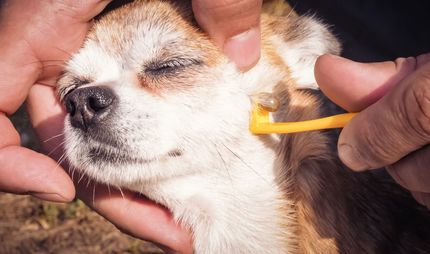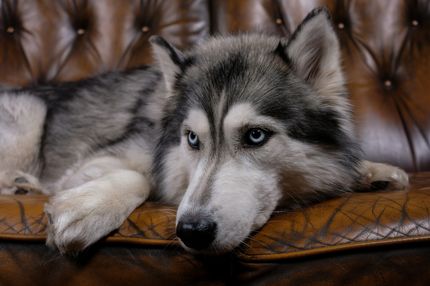Facts & Origin
History and origin of the Scottese
The Scottese, a mix of the Maltese and the Scottish Terrier, is not a separate, officially recognized dog breed and therefore not associated with any specific origin or history. However, this particular mix is becoming increasingly popular. Both parent breeds, the Maltese and the Scottish Terrier are very old, well-known breeds. The Maltese originates from the Mediterranean area, the Scottish Terrier from Scotland.
Suitability and attitude
The Scottese is an easy to care for, hardy dog and with proper socialization and training, an ideal family dog. He is adaptable and can live in both an apartment and a house with a garden.
Because he carries both the active terrier instinct and the quieter, affectionate character of the Maltese, he needs both physical and mental exercise, so regular walks, activity and playtime are necessary.
However, care should be taken not to spoil him too much, as both parent breeds tend to be very stubborn if not properly trained. A certain amount of consistent training is therefore beneficial.
| Alternate Name | - |
| Origin | Malta - Scotland |
| Life expectancy | 10 - 15 years |
| Care requirements | high-maintenance |
| Activity level | low - average |
| FCI group | not recognised |
| AKC group | not recognised |
| KC group | not recognised |
More Maltese mixes
More Scottish terrier mixes
Attitude, character and temperament of the breed
Character and temperament
The Scottese's personality is a balanced mixture of his parent breeds. He has the energetic, independent spirit of the Scottish Terrier - is always active and curious, loves walks and needs regular exercise.
At the same time, he is just as affectionate, loving and calm as the Maltese. He likes his family members very much and enjoys spending time with them, whether playing or cuddling. An intelligent dog, the Scottese learns quickly and shows off his playfulness and charm.
Training and socialization
Early socialization and training are important for the Scottese, as he can sometimes have a headstrong terrier stubbornness. However, with positive reinforcement and patient, consistent training, a well-mannered and sociable dog can be produced.
Character
Usage
Care of the Scottese
The grooming of a Scottese is considered moderate . His coat is often medium length and wavy, requiring regular brushing to avoid knots and matting. A weekly brushing is usually sufficient.
Like all dogs, the Scottese requires regular dental cleanings and nail care. Training and exercise are tremendously important with this breed. As an active, intelligent dog, the Scottese needs both physical and mental stimulation to stay healthy and happy.
Health of the Scottese
Overall, the Scottese is a healthy dog, however, as with any mixed breed dog, it can be prone to the health problems that are common in both breeds, that is, both the Maltese and the Scottish Terrier. These include eye disease, hip dysplasia, patellar luxation, and various types of skin disease. Therefore, a regular veterinary examination is essential to ensure the health of the dog.
Breeding the Scottese
Breeding a Scottese requires knowledge of the specific health and behavioral characteristics of the Maltese and Scottish Terrier breeds. It is important that breeders understand the genetic traits of both breeds in order to achieve healthy offspring.
Breeders should also be careful to use only dogs with the best temperament for breeding to ensure that the puppies also have a good temperament.
What does this mixed breed look like?
If you are looking for a small, low-maintenance, family-friendly pet, the Scottese is an excellent choice.
He is a small to medium sized dog whose build is strong and compact. The coat of the Scottese is usually of medium length and, depending on its heredity, may more closely resemble the smooth coat of the Maltese or the wiry coat of the Scottish Terrier. It exhibits a variety of colors, the most common being white, black and brown.
| Fur length | long |
| Fur | flat coated |
| Ear shape | Triangle - Standing Ears |
| Tail | fanned out - short |
| Anatomy | dainty, muscular, rugged, square |
| Size ♀ | 20 - 28 cm |
| Weight ♀ | 3 - 9 kg |
| Size ♂ | 21 - 28 cm |
| Weight ♂ | 3 - 10 kg |
| Suitable For | Beginner, Seniors, Children, Seniors |
Known Diseases
Patellar problems
Problems with the Patellar can be a displacement or weak kneecap, which is one of the most common causes of lameness in dogs, also because of overweight.
Eye diseases
Often occur with allergies and intolerances.
Skin inflammations
Can be hereditary in certain breeds.
Heart disease
Can occur frequently in dogs and can sometimes be treated with medication.
Cancer
May be common in older dogs.
FAQ
-
The characteristics are usually a compact body, black or brown fur and possibly a white chest and paws. They also have a lively character and a very loyal nature.
-
Since the coat is often quite dense, it is important to brush him regularly. They can also get a shorter haircut to make grooming easier. In addition, they need regular exercise, as well as a balanced diet.
-
Yes, these mixed breeds need to be trained as they are curious and energetic. They can be prone to undesirable behavior if not properly trained, so it is important that they receive discipline and structured training.
-
Yes, Scotties need a lot of attention and love. They enjoy spending time with the owner and they should get daily exercise and activity to stay healthy and happy.
